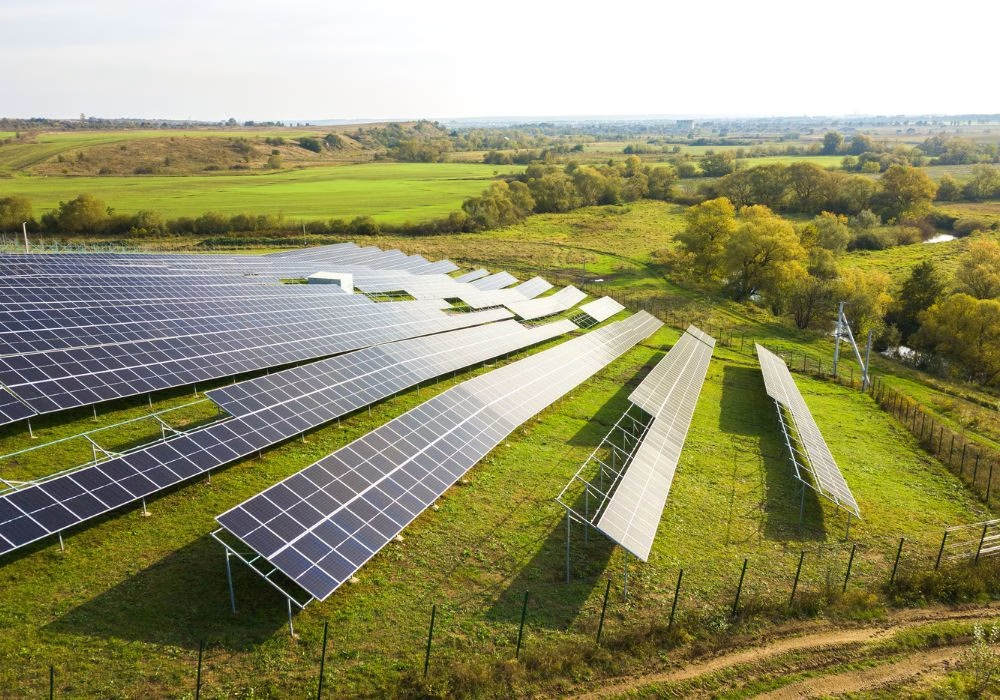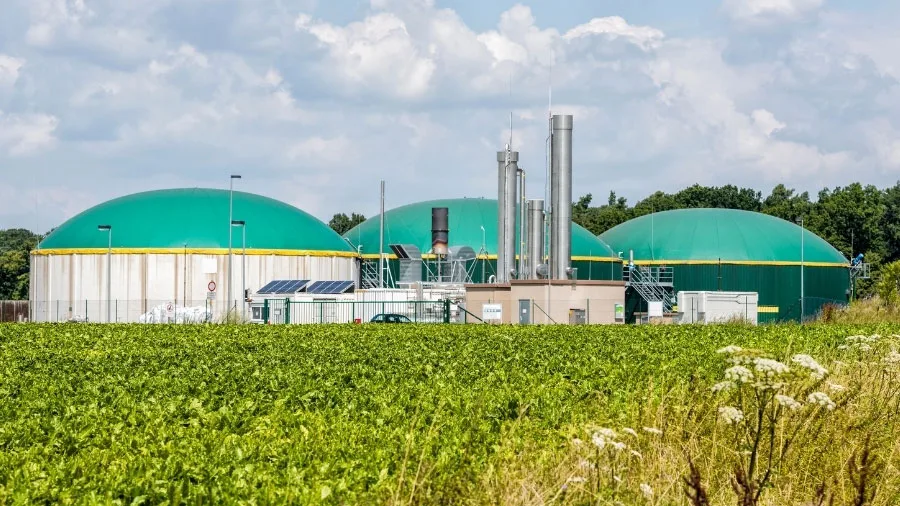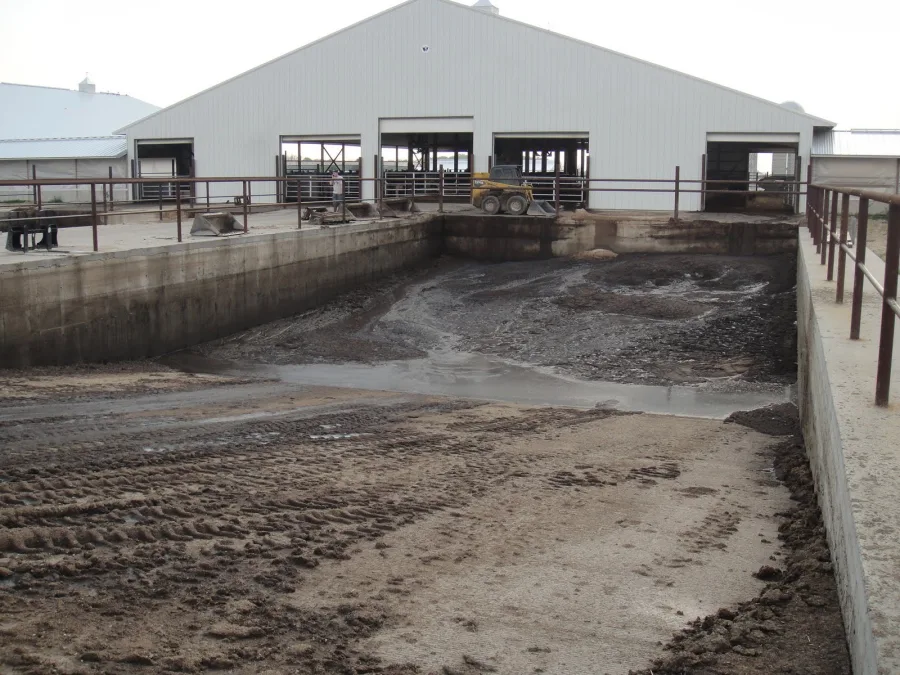Explore how Rutgers’ vertical solar panels could transform your dairy farm. Can agrivoltaics enhance sustainability and efficiency?
Summary:
Picture a future where farms thrive sustainably while generating renewable energy. Rutgers University’s innovative approach with over 375 vertical, bifacial solar panels introduces such a vision, generating power from both sides and enhancing the synergy between agriculture and electricity. This agrivoltaics project part of a $7.4 million initiative, merges food production with clean energy in New Jersey and offers dairy farmers a chance to improve revenue without sacrificing agricultural land. Dr. Becca Jones-Albertus from the US Department of Energy underscores its transformative potential for the farming community. Agrivoltaics promises to reduce carbon footprints while harmonizing crop growth with energy production, aligning with goals to transition towards renewable energy and conservation without converting pristine areas into solar farms.
Key Takeaways:
- Rutgers University has taken a pioneering step by integrating vertical bifacial solar panels on their animal research farm, representing the first agrivoltaic installation of its kind in New Jersey.
- This innovative solar design supports the dual-use of farmland, allowing both agricultural production and solar energy generation, without compromising space for farming activities.
- The project highlights potential economic benefits for farmers by offering an additional revenue stream and potentially reducing energy costs.
- A significant focus of the initiative is to explore how agrivoltaics could enhance food productivity while contributing to renewable energy goals, in alignment with New Jersey’s energy policies.
- The initiative has garnered support and funding from various federal and state entities, highlighting its strategic importance in the realm of sustainable agriculture and energy production.
- The Rutgers Agrivoltaics Program is positioned as a leader in demonstrating how innovative solar technology could be scaled statewide, influencing future energy and agricultural practices.

Imagine a pasture where cows relax beneath large solar panels, soaking in the sun to power their farms and houses. Rutgers University is making this happen by installing more than 375 cutting-edge vertical, bifacial solar panels. These incredible panels, which absorb sunlight from both sides, making them very energy efficient, while still giving enough room for farming—it’s a beautiful combination of contemporary technology with traditional dairy farming.
“Rutgers is all about sustainable innovation, showing how agriculture is changing for the better—mixing clean energy with food production to help dairy farmers thrive,” says Dr. Becca Jones-Albertus, a key figure in the US Department of Energy’s efforts to promote sustainable energy solutions in agriculture.
This dual-purpose device does more than generate power; it also integrates renewable energy into the farm’s daily routine, making it more straightforward to transition to more sustainable practices. With dairy producers facing mounting prices and environmental concerns, agrivoltaics could be the game-changer the sector has sought, potentially reducing operational costs and environmental impact while increasing energy independence.
Harvesting Sunlight and Sustaining Farms: The Agrivoltaics Frontier
Agrivoltaics is about utilizing the same land area to produce crops and generate solar energy. This fantastic integration allows us to collect renewable energy while maintaining the overall agricultural theme. When you elevate or place solar panels above crops or pasture, sunlight filters through, keeping crops healthy and growing or providing shaded spaces for cattle to graze.
Agrivoltaics has the potential to revolutionize land use, a crucial aspect of sustainable energy production. By combining energy generation with agricultural activities, it maximizes land use, particularly in areas where prime land is scarce and valuable. This strategy also aligns with conservation goals by reducing the need to convert pristine areas into solar farms, thereby contributing to ecosystem preservation.
One significant advantage of agrivoltaics is the enhanced financial sustainability of agricultural operations. By potentially reducing water consumption and providing shade that mitigates heat stress on crops and animals, it can lead to increased yields and livestock health. Moreover, by generating their own power, farmers can save on energy bills, providing a significant financial boost that can stabilize earnings and foster growth.
So, as the agricultural sector faces new problems from climate change, agrivoltaics offers a novel method to shake things up. It helps maintain the food supply while increasing energy independence. Investing in this technology might help farmers take the lead in environmental protection and the transition to renewable energy, promoting a more sustainable future.
Rutgers University’s Renewable Leap: Harmonizing Solar Innovation with Farming Heritage
Rutgers University’s research is an exciting step forward in combining renewable energy with agricultural sustainability. Installing 378 vertical bifacial solar panels on the animal research farm is more than simply producing electricity; it’s also about examining how cutting-edge technology can coexist with traditional agricultural ways. These panels are designed to capture sunlight from both sides, intending to increase energy output while maintaining agricultural activities.
This initiative, which has received significant federal and state funding, exemplifies how everyone works together, with a diverse group of individuals participating. The United States Department of Energy (DOE) is critical, given how agrivoltaics may enhance renewable energy and help farmers earn more money. Dr. Becca Jones-Albertus from the DOE discussed how this research might drive creativity outside New Jersey.
State authorities such as New Jersey Secretary of Agriculture Ed Wengryn and New Jersey Board of Public Utilities President Christine Guhl-Sadovy support the initiative, emphasizing the state’s commitment to leading the way in solar technology. People must become engaged since New Jersey attempts to lead the way in renewable energy while preserving its agricultural heritage.
The Rutgers Agrivoltaics Program is leading the way at the university, with people like David Specca and Professor A.J. working on research that might alter the game for farming in New Jersey and beyond. This initiative is more than just science; it’s an excellent step toward a more sustainable way of life that respects the environment and appropriately uses solar energy.
Powering Productivity: Vertical Panels Revolutionize the Farming Landscape
Instead of traditional solar panels that face south, Rutgers’ vertical bifacial solar panels absorb sunlight from both sides. This innovative design allows them to gather more energy throughout the day, including light reflecting off the ground or surrounding objects. By standing vertically, these panels maximize sunshine while taking up less room. This tiny but significant alteration allows lands to remain productive for agricultural operations.
Dairy producers can genuinely feel the benefits. Consider a landscape with cows relaxing or crops flourishing under some solar panels. This two-in-one solution allows farmers to continue performing their work while creating renewable energy and diversifying their revenue streams. Furthermore, these systems may assist in reducing the farm’s power bills, providing a significant financial benefit by covering part or all of the energy expenditures. Vertical bifacial solar panels are excellent, making pursuing sustainable energy goals simpler while still farming.
Pioneering the Future: Vertical Panels That Embrace Sunlight and Sustain Agriculture
Vertical bifacial solar panels are an intelligent technological innovation ideal for agricultural settings. Unlike traditional solar arrays, which are fixed and face south, these attractive new panels are mounted vertically. They take up much space and are not very beneficial throughout their life. This design allows them to absorb sunshine from all sides, increasing their energy production while minimizing land consumption. Dairy producers are committed to maintaining large portions of their land productive while simultaneously using renewable energy.
Their innovative design facilitates the integration of energy generation with agriculture. The solar panels allow sunshine by keeping it vertical, which reduces shade and maintains the soil in excellent condition. This location is ideal for dairy producers who depend on the area to graze their animals or raise feed crops. Doing routine agricultural operations while gathering solar energy dramatically increases the farm’s sustainability and profitability.
The Rutgers Agrivoltaics Program capitalizes on this promise via extensive research and development. They’re all about discovering how vertical solar technology can be integrated with current agricultural techniques. Researchers are looking at grazing systems that maximize land usage while maintaining smooth cow habits. They also investigate how crops perform under various light configurations from vertical panels, comparing the findings to traditional farming to see what works best or what concerns arise.
At the beginning of the 2024 growing season, the program launched a multi-year study strategy to gather a large amount of data across several variables. This long-term approach will provide valuable insights into integrating solar energy equipment into existing agricultural settings. We expect positive outcomes, such as increased energy generation and crop yields, and a greater understanding of how this technology may assist dairy farmers in decreasing costs and set a good example for others wishing to balance production with environmental stewardship.
Charting New Territories: Where Solar Meets Soil
Rutgers University’s Agrivoltaics Program is pioneering research into how agriculture and solar energy may complement one another. This groundbreaking initiative investigates how these two vital areas interact and impact one another. The program includes several research objectives, including studies into grazing tactics, crop performance, and ways to combine solar energy with current agricultural practices.
The initiative is centered on determining how vertical bifacial solar panels affect grazing methods. Researchers want to blend these panels into farms to determine the ideal grazing patterns for beef cattle, which might completely revolutionize how we manage livestock and energy production. Using the creative architecture of these solar arrays offers up some new agricultural options previously limited by traditional solar farm installations.
The initiative investigates how various crops perform, whether planted in the shadow or partially covered by solar panels. This study section might provide some interesting insights on increasing agricultural yields and making them more robust, particularly given New Jersey’s unique climate. Rutgers is attempting to develop a strategy for increasing agricultural production while simultaneously producing renewable energy by evaluating the performance of agrivoltaic systems deployed in various locations in the United States.
At the center of these ambitions is a robust research strategy that began with the 2024 growing season. This long-term strategy allows researchers to monitor seasonal changes, see how events unfold, and improve agricultural operations. This research intends to develop agrivoltaics systems to increase food production while producing power. Rutgers hopes to develop an excellent model for energy sustainability that improves agricultural profitability rather than jeopardizing it.
Reaping Financial and Environmental Rewards: The Dual-Use Advantage of Solar in Farming
You must recognize how much money can be earned by incorporating solar panels into agrivoltaic systems. Farmers may save money on their everyday expenditures by using solar energy. Farms may meet a significant portion if not all, of their energy requirements by producing their power, which significantly reduces utility expenditures. This integration serves as a safety net, providing farmers with a consistent source of supplementary income, especially when volatile agricultural markets and weather may be unexpected.
Aside from the monetary implications, the environmental consequences are also significant. Agrivoltaics is an excellent step toward a better future since it significantly reduces carbon emissions from traditional energy generation. Using solar panels is an intelligent method to increase renewable energy while preserving agriculture, allowing us to continue producing food without worry. This land use maximizes resource use, increasing energy production and agricultural productivity while also assisting rural communities in remaining resilient in the face of climate change.
So, Why is Everyone Buzzing About This Rutgers Initiative?
So, why is everyone buzzing about this Rutgers initiative? Let’s hear from the experts and stakeholders deeply involved in this groundbreaking project.
David Specca, the Rutgers EcoComplex Assistant Director and the Rutgers Agrivoltaics Program lead, emphasizes agrivoltaics’ potential. He notes, “There’s always been this issue that when a big solar farm goes in, it takes that ground out of agricultural production, so you can no longer grow crops or raise animals for the system’s lifespan.” This innovative approach overturns that notion by marrying solar power with continued land use for agriculture.
Laura Lawson, the SEBS Executive Dean, echoes this sentiment. “This new technology has the potential to produce renewable energy needed to reduce our carbon dioxide emissions while simultaneously making our family farms more viable and sustainable,” says Lawson. Her enthusiasm captures the dual focus on energy efficiency and agricultural support.
Governmental Support plays a critical role, too. Dr. Becca Jones-Albertus, Director of the U.S. Department of Energy (DOE) Solar Energy Technologies Office, championed the program, stating, “DOE recognizes the enormous opportunity for agrivoltaics to combine agriculture with clean energy production while increasing revenue for farmers and landowners.” This endorsement underscores the project’s alignment with national renewable energy goals.
The Bottom Line
The Rutgers initiative is an exciting step forward in agrivoltaics, demonstrating a clever approach for combining renewable energy and farming. This innovative integration shines with rising energy demands and environmental concerns, particularly in dairy production. Combining vertical bifacial solar panels with traditional agricultural methods has the potential to transform dairy processes completely. This offers an exciting method to improve things and envisions an agricultural future in which conserving energy does not entail compromising the produce or the animals.
This campaign encourages everyone to consider and investigate the underutilized potential of renewable resources in their daily activities. For dairy producers, employing these dual-purpose technologies might completely transform the game regarding production and earnings while complying with environmental regulations. Looking forward, innovation is critical for meeting those sustainability objectives. It demonstrates that moving toward a greener, more efficient future requires inventive thinking and aggressive action, as Rutgers has done. Have you considered what your property might accomplish with lovely sun and soil?
Learn more:
- Solar Energy Revolution on European Dairy Farms: Navigating Hurdles and Reaping Benefits
- World’s First Carbon-Neutral Dairy Farm: The Exciting Race to Eco-Friendly Farming
- Dairy Manure Cuts Carbon Emissions: AstraZeneca Teams Up with Vanguard Renewables
 Join the Revolution!
Join the Revolution!
Bullvine Daily is your essential e-zine for staying ahead in the dairy industry. With over 30,000 subscribers, we bring you the week’s top news, helping you manage tasks efficiently. Stay informed about milk production, tech adoption, and more, so you can concentrate on your dairy operations.







 Join the Revolution!
Join the Revolution!







